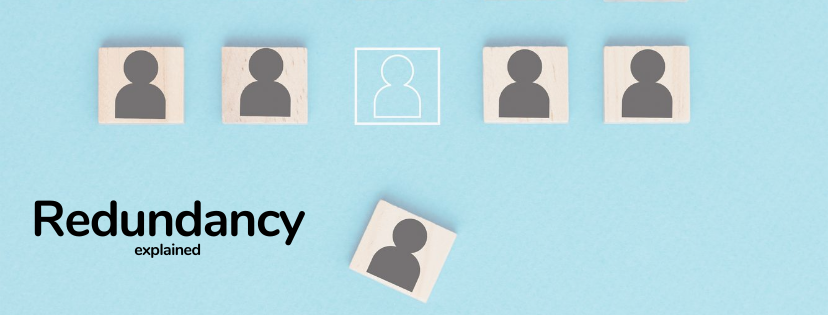Exactly How to Handle Redundancy Pay If Company Goes Bust: Key Info for UK Employees
Exactly How to Handle Redundancy Pay If Company Goes Bust: Key Info for UK Employees
Blog Article
Investigating the Interplay Between Business Redundancy and Business Flexibility for Future Development
In the dynamic landscape of today's service globe, the intricate partnership in between firm redundancy and organizational flexibility emerges as a crucial element for sustained growth and success. Firms often face the difficulty of striking a fragile equilibrium in between preserving a degree of redundancy to alleviate dangers and cultivating flexibility to react quickly to the ever-evolving market demands.
Relevance of Firm Redundancy
Company redundancy is a crucial element that enhances business resilience and minimizes operational risks. By including redundancy procedures within the organizational framework, firms can much better stand up to unanticipated disturbances and fluctuations in business setting. Redundancy functions as a tactical barrier, permitting companies to adapt and react successfully to unexpected obstacles without compromising necessary procedures.
One trick facet of the relevance of business redundancy is its function in guaranteeing connection throughout times of crisis. When confronted with abrupt modifications or emergencies, redundant systems, resources, or workers can step in to preserve important features and stop widespread interruptions. This continuity not just safeguards the company's credibility and customer depend on yet additionally minimizes monetary losses and operational downtime.

Strategies for Business Versatility

An additional crucial approach is spending in modern technology and infrastructure that can sustain flexibility and scalability. Applying electronic tools, automation, and data analytics can improve procedures, enhance efficiency, and give valuable insights for informed decision-making. Moreover, creating adaptable business frameworks that enable quick modifications to market dynamics and consumer needs is crucial for staying affordable in a quickly advancing setting. By proactively identifying potential disruptions and possibilities, organizations can proactively thrive and adjust in an ever-changing company landscape.
Balancing Redundancy and Versatility
Achieving a harmonious balance between functional redundancy and organizational adaptability is vital in navigating the complexities of a dynamic service atmosphere. Redundancy within a company gives a safety and security internet, making sure continuity and stability in operations. Nonetheless, an excess of redundancy can bring about inadequacies and prevent flexibility to altering market problems. On the various other hand, organizational versatility allows companies to respond without delay to outside interruptions and seize new possibilities. Striking the best equilibrium between redundancy and flexibility is a delicate process that requires a deep understanding of the company's objectives, sector dynamics, and threat tolerance.
To achieve this equilibrium, business require to carry out normal assessments of their procedures to determine locations where redundancy is required for danger reduction and where versatility can drive technology and development. Implementing versatile frameworks, fostering a society of continual discovering and renovation, and motivating open interaction throughout all levels of the organization are vital methods to balance redundancy and versatility successfully. By aligning these 2 important components, firms can position themselves for sustainable development and success in an ever-changing business landscape.
Situation Research Studies on Adjustment Success
In checking out circumstances of successful business adaptation, it ends up being evident that the interplay in between operational redundancy and versatility is a defining consider forming durable companies. One compelling situation research is that of Netflix. Initially a DVD rental solution, Netflix showed impressive flexibility by transitioning into a streaming system when digitalization interrupted the sector. By strategically investing in modern technology and material production, Netflix not just prospered yet endured in a rapidly progressing market. One more standout example is Amazon. Beginning as an online bookstore, Amazon continuously adjusted its organization version, broadening into varied markets such as cloud computing and expert system. This versatility allowed Amazon to remain ahead of rivals and fulfill changing consumer demands. Last but not least, Adobe offers a noteworthy picture of effective adaptation. The firm changed from selling software program licenses to a subscription-based model, ensuring repeating income streams and improved consumer interaction. These study underscore the value of functional redundancy coupled with business versatility in fostering long-term growth and competition.
Structure Durability for Future Development
Building durability for future development needs a strategic alignment of operational procedures with market characteristics and arising trends. check this site out Companies have to adapt to transforming atmospheres by promoting a society of versatility, advancement, and continual renovation. Resilience includes not just getting better from problems but also proactively getting ready for future challenges. One vital aspect of building durability is buying robust threat administration approaches to mitigate potential disruptions. This consists of situation planning, expanding supply chains, and developing contingency prepare for various contingencies (who pays redundancy view money).
Moreover, fostering solid partnerships with stakeholders, such as consumers, staff members, vendors, and the area, is essential for weathering uncertainties and preserving trust and support during turbulent times. Effective communication and transparency play an important function in structure resilience, as they assist assist in and align assumptions collaboration in browsing unpredictabilities.
In addition, companies require to focus on understanding and growth efforts to upskill employees and equip them with the essential devices to adjust to altering conditions. By buying their workforce, firms can improve their versatility and dexterity, inevitably reinforcing their strength for sustainable future development.
Final Thought

In the vibrant landscape of today's organization globe, the detailed relationship between firm redundancy and organizational adaptability arises as a critical aspect for sustained development and success. Business typically face the challenge of striking a fragile equilibrium in between preserving a degree of redundancy to reduce dangers and cultivating adaptability to respond promptly to the ever-evolving market needs.To attain this equilibrium, firms need to perform normal assessments of their procedures to determine browse around this site locations where redundancy is necessary for threat mitigation and where versatility can drive development and growth.In final thought, the interaction between firm redundancy and organizational versatility is important for future development. Building resilience with a mix of redundancy and flexibility will certainly ensure that business are prepared for the difficulties of the future.
Report this page